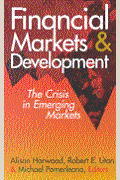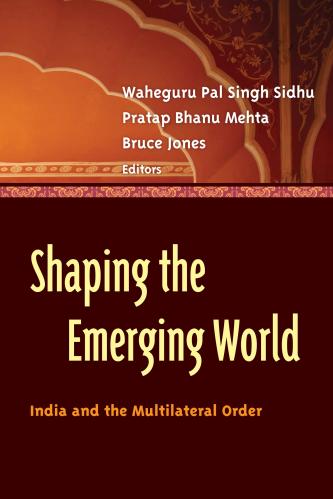Until recently, there was a broad consensus that this was to be the emerging countries’ century. But financial markets’ reaction to the US Federal Reserve’s warning in May that it may wind down its unconventional monetary policies led many analysts to question how rapid emerging-market growth would be. At this month’s Annual Meetings of the World Bank Group and the International Monetary Fund, the emerging countries’ prospects will be a topic of heated debate.
Until mid-2013, the IMF and the World Bank had projected aggregate per capita GDP growth rates for the emerging and developing countries (EMDEVs) to be almost three percentage points higher than in the world’s advanced countries over the next few years. Most commentators expected a substantial difference in per capita growth to continue beyond this decade, disagreeing only about the magnitude of the emerging countries’ growth advantage.
Arvind Subramanian’s estimates for China, and Uri Dadush’s for EMDEVs more generally, represented the upper range of these projections. Others, such as Dani Rodrik, have always been more cautious, arguing that much of the past rapid growth in major EMDEVs was due to a period of technological “catch-up” growth in manufacturing, which was reaching its limits, and could not be easily extended to the large service sector or other parts of developing economies.
As it turned out, a “mini-crisis” followed Federal Reserve Board Chairman Ben Bernanke’s announcement that the Fed might “taper” its quantitative-easing (QE) policy – its open-ended commitment to monthly purchases of long-term assets worth $85 billion – before the end of 2013. Many emerging economies’ stock markets and currencies took a large hit, and headlines were soon announcing the end of the emerging-market boom.
To be sure, many emerging-market asset values have recovered ground since, and in September the Fed changed its mind about the imminence of “tapering” QE. But the mood had changed, and the “median” projection of emerging economies’ growth prospects has shifted. Latin American economists are particularly pessimistic. After revising downward in July its growth projections for emerging countries, the IMF is about to do so again (though only moderately) ahead of the Annual Meetings.
The future, of course, is uncertain. But I continue to believe that convergence is here to stay, though it will not occur at the extraordinary pace of the 2008-2012 period, when the global financial crisis and the eurozone’s difficulties led to particularly slow growth in the advanced economies.
Do recent events mean that “convergence” is ending? Is the world reverting to a growth pattern whereby the percentage gap between income levels in the aggregate “North” and “South” does not decrease? Or is the current talk about “the end of convergence” merely a reflection of financial markets’ usual overreaction to both good and bad news?
The future, of course, is uncertain. But I continue to believe that convergence is here to stay, though it will not occur at the extraordinary pace of the 2008-2012 period, when the global financial crisis and the eurozone’s difficulties led to particularly slow growth in the advanced economies. What is likely is a return to the pre-crisis differential: from 1990 to 2008 (excluding the 1997-1998 Asian financial crisis), aggregate per capita growth in the emerging world was about 2.5 percentage points higher than that in the advanced countries. In the 2008-2012 period, that differential increased to more than four percentage points. It now appears set to fall back to about 2.5 percentage points.
China will continue to account for a big part of the differential. While China’s annual growth may decline to 6%-7%, from the 9%-10% rate recorded until 2010, China’s economic weight is increasing. Moreover, emerging Asia as a whole has remained on a convergence path, as have countries like Turkey, Colombia, Peru, and Chile. Technological “catch-up” will remain the underlying driver of convergence, beyond the short-term shocks and temporary problems that capital-flow volatility may cause.
Of course, “prudent” countries, with small current-account deficits or surpluses, will be much more immune to temporary shocks. Diversified economies will also tend to do better relative to primary-goods exporters. Moreover, countries that invest 25% or more of their national income will be able to grow faster than those – including many in Latin America – with low levels of savings and investment. Asia will grow faster because it is accumulating physical and human capital more rapidly, which not only increases output directly, but also facilitates technological progress and diversification of the type that Ricardo Hausmann and Cesar Hidalgo identify as the key to sustained growth.
Convergence has never taken hold for all EMDEVs; but it has already changed the nature and structure of the world economy, particularly in terms of the traditional North-South divide, and it will continue to do so. Aggregate growth trends have decoupled, though cycles within these trends are correlated, owing to financial globalization and trade interdependencies. A serious slowdown in emerging economies would lead to another marked slowdown in the advanced economies, too, so that the growth differential would likely remain relatively stable, at least in yearly data.
Long-term growth is determined by the ability to accumulate technological and institutional capacities and the quality of national policies. Over the last two decades, many emerging countries, including some of the largest, have performed well in this respect. Their efforts will remain the basis for aggregate convergence. We should not allow the many exceptions or temporary financial-market worries to obscure this underlying reality.









Commentary
Op-edThe End of Convergence?
October 3, 2013